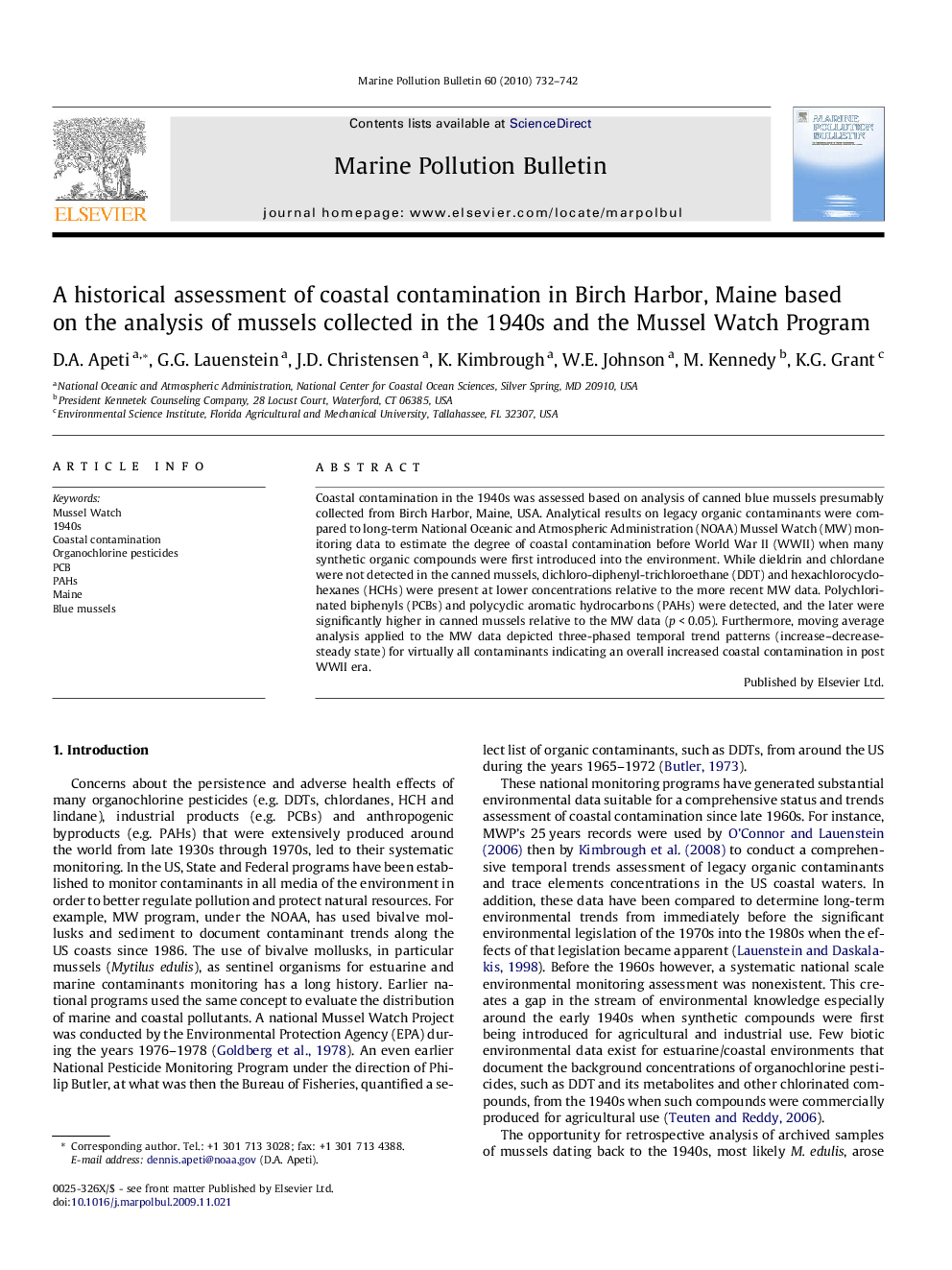| Article ID | Journal | Published Year | Pages | File Type |
|---|---|---|---|---|
| 6362796 | Marine Pollution Bulletin | 2010 | 11 Pages |
Abstract
Coastal contamination in the 1940s was assessed based on analysis of canned blue mussels presumably collected from Birch Harbor, Maine, USA. Analytical results on legacy organic contaminants were compared to long-term National Oceanic and Atmospheric Administration (NOAA) Mussel Watch (MW) monitoring data to estimate the degree of coastal contamination before World War II (WWII) when many synthetic organic compounds were first introduced into the environment. While dieldrin and chlordane were not detected in the canned mussels, dichloro-diphenyl-trichloroethane (DDT) and hexachlorocyclohexanes (HCHs) were present at lower concentrations relative to the more recent MW data. Polychlorinated biphenyls (PCBs) and polycyclic aromatic hydrocarbons (PAHs) were detected, and the later were significantly higher in canned mussels relative to the MW data (p < 0.05). Furthermore, moving average analysis applied to the MW data depicted three-phased temporal trend patterns (increase-decrease-steady state) for virtually all contaminants indicating an overall increased coastal contamination in post WWII era.
Related Topics
Physical Sciences and Engineering
Earth and Planetary Sciences
Oceanography
Authors
D.A. Apeti, G.G. Lauenstein, J.D. Christensen, K. Kimbrough, W.E. Johnson, M. Kennedy, K.G. Grant,
